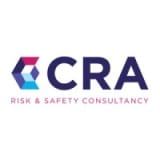This informal CPD article ‘Could smartphones prove vital in emergency preparedness?’ was provided by Lauren Perry, Graduate Safety & Risk Engineer and Alfonso Fox, Principle Engineer in Safety, Security & Resilience from Corporate Risk Associates (CRA). For over 20 years, CRA has been supporting operational leaders and technical directors working in critical national infrastructure sectors including Nuclear and Defence with working spanning projects in the UK, Europe, the Middle East and Asia.
There are few areas of our lives that cannot be facilitated by smart phones. Whether it be keeping in touch with loved ones, travelling, or leaning something new – there is probably an app for it. We frequently upgrade our software and phones to enhance our experience, but could these technologies serve a greater purpose?
Introducing: accelerometers. They have existed in phones for years and detect changes in motion such as tilting and shaking. This is why your phone knows which way you are facing when navigating, and how many steps you’ve done. However, the high sensitivity of accelerometers means that they are now being used to detect earthquakes and even warn people before they happen. These warnings were seen by people during earthquakes that occurred in California1 in 2022 and Philippines in 2021.
How does it work?
The operating systems of our smartphones have been set up to combine crowd sourced data. When a phone detects an earthquake, it sends a signal to a detection server along with its location. The information is then combined with that received from other phones to decide whether an earthquake is occurring before alerting users. Following the previously mentioned California earthquake in 2022, many android users reported that they received alerts of the quake 5 to 10 seconds before feeling it, compared with iPhone users who received the alert as the quake hit. This prior warning is due to phone signals travelling faster than seismic waves, hence the alert reached the users vital seconds before the shaking did.
Wider applications to Emergency Preparedness?
Given how accessible smartphones are, it makes sense to question whether they could play a part in how we plan for and respond to emergencies. To set up a new detection point in a particular area could be as simple as buying and fitting smartphones in early warning locations to protect assets such as hospitals, schools, nuclear power plants (NPPs) and other high hazard industries. A mesh of such sensors could be set up for SMRs which might be deployed in traditionally remote locations. Additionally, receiving a 10 second warning of an incoming earthquake could play a significant part in transport industries such as aviation and rail – trains could be slowed down and prevented from entering bridges or tunnels, and planes could have their landings or take-offs postponed.
Shifting from industries to individuals, users could have the option to opt-in for their location to be shared with emergency services in the event of an earthquake, allowing emergency services to locate those who need help. Crowd sourced data could therefore be highly accessible and used to aid populations across the world, offering widespread benefits and potentially preventing numerous injuries and damages.
Another way in which crowdsourced data could influence our emergency planning is by monitoring how we respond to these events. For example, we may not always follow the correct evacuation procedure when in a high-stress situation. If smartphones can track our movements, we could determine if there is a common way in which groups evacuate that deviates from procedure and use this data to develop optimal response plans based on real behaviour.














